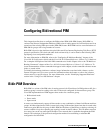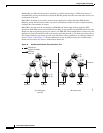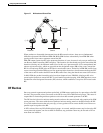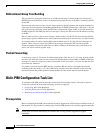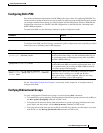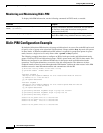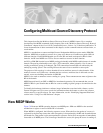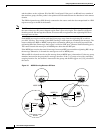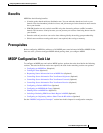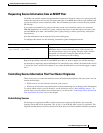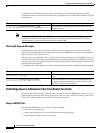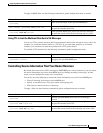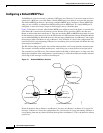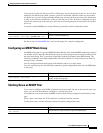
Configuring Multicast Source Discovery Protocol
Benefits
IPC-479
Cisco IOS IP Configuration Guide
Benefits
MSDP has the following benefits:
• It breaks up the shared multicast distribution tree. You can make the shared tree local to your
domain. Your local members join the local tree, and join messages for the shared tree never need to
leave your domain.
• PIM-SM domains can rely on their own RPs only, thus decreasing reliance on RPs in another
domain. This increases security because you can prevent your sources from being known outside
your domain.
• Domains with only receivers can receive data without globally advertising group membership.
• Global source multicast routing table state is not required, thus saving on memory.
Prerequisites
Before configuring MSDP, the addresses of all MSDP peers must be known in BGP or MBGP. If that
does not occur, you must configure MSDP default peering when you configure MSDP.
MSDP Configuration Task List
To configure an MSDP peer and various MSDP options, perform the tasks described in the following
sections. The tasks in the first section are required; the tasks in the remaining sections are optional.
• Configuring an MSDP Peer (Required)
• Caching SA State (Optional)
• Requesting Source Information from an MSDP Peer (Optional)
• Controlling Source Information That Your Router Originates (Optional)
• Controlling Source Information That Your Router Forwards (Optional)
• Controlling Source Information That Your Router Receives (Optional)
• Configuring a Default MSDP Peer (Optional)
• Configuring an MSDP Mesh Group (Optional)
• Shutting Down an MSDP Peer (Optional)
• Including a Bordering PIM Dense Mode Region in MSDP (Optional)
• Configuring an Originating Address Other Than the RP Address (Optional)
See the “MSDP Configuration Examples” section later in this chapter for configuration examples.



